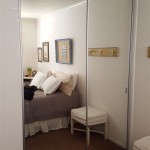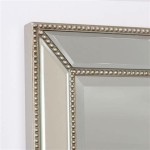How To Mirror Two TVs
Mirroring content across two TVs opens up opportunities for enhanced viewing experiences, whether for expanding screen real estate for presentations or enjoying the same media in different rooms. This article explores the various methods to achieve TV mirroring and discusses the necessary equipment and setup procedures.
Using HDMI Splitters
HDMI splitters are a straightforward solution for mirroring the same content to multiple TVs. These devices take one HDMI input source and duplicate the signal across several HDMI outputs. Users connect the source device (e.g., cable box, Blu-ray player, gaming console) to the splitter's input, and then connect separate HDMI cables from the splitter's outputs to each TV. The primary benefit of HDMI splitters is their simplicity and cost-effectiveness, making them ideal for static displays or when synchronized audio is not critical.
However, HDMI splitters do have limitations. They generally mirror the exact resolution of the source. If the TVs have different native resolutions, the output may be suboptimal on one or both displays. Additionally, splitters may struggle with high-bandwidth content, potentially impacting picture quality at higher resolutions like 4K. For basic mirroring needs, though, HDMI splitters are often sufficient.
Wireless HDMI Transmitters and Receivers
Wireless HDMI transmitters and receivers provide a cable-free solution for mirroring. A transmitter connects to the source device's HDMI output, while a receiver connects to each TV's HDMI input. The transmitter wirelessly transmits the audio and video signals to the receivers, allowing for a cleaner setup without long HDMI cables. This solution is especially convenient for larger rooms or situations where running cables is impractical.
Users should carefully consider the range and potential interference factors when choosing a wireless HDMI system. Obstructions like walls can impact signal strength. It is important to choose a system with a sufficient range and bandwidth to support the desired resolution and frame rate. Some systems might also introduce slight latency, which could be noticeable for gaming or fast-paced content.
Casting Devices (Chromecast, Roku, Fire TV Stick)
Casting devices offer a flexible way to mirror content from compatible mobile devices, tablets, and computers to TVs. Devices like Chromecast, Roku, and Fire TV Stick plug directly into the HDMI port of each TV. Users initiate mirroring from their device using the respective casting protocols (e.g., Google Cast, Miracast). This method allows for mirroring of specific apps, tabs, or even the entire device screen.
Casting relies on a stable Wi-Fi network for proper functionality. Network congestion can lead to buffering or reduced image quality. While convenient for displaying online content and personal media, casting might not be suitable for mirroring protected content, such as Blu-ray discs or pay-per-view events, due to digital rights management restrictions.
Smart TV Features (Screen Mirroring, DLNA)
Many modern Smart TVs have built-in screen mirroring features. These features often utilize technologies like Miracast or proprietary protocols to connect directly with compatible devices, such as smartphones and tablets. Users can then mirror their device's display to the TV without requiring additional hardware. Additionally, some smart TVs support DLNA (Digital Living Network Alliance), allowing them to access and play media files stored on other devices within the same network, like computers or network-attached storage (NAS) drives. Though not strictly mirroring, DLNA offers a convenient way to share content across multiple displays within a home network.
Compatibility is a crucial factor when relying on Smart TV features. Different TV brands and models might support different mirroring protocols or DLNA standards. It is necessary to ensure that both TVs and the source device are compatible for seamless mirroring. Network stability is also important for optimal performance, as with casting devices.
Using a Distribution Amplifier with HDMI Splitters
For situations requiring mirroring across a longer distance or to numerous TVs, combining a distribution amplifier with HDMI splitters can be effective. The distribution amplifier boosts the HDMI signal strength, allowing it to travel further without significant degradation. This setup involves connecting the source to the distribution amplifier, then connecting the amplifier’s output to multiple HDMI splitters, each of which then connects to a group of TVs. This tiered approach provides both signal amplification and distribution capability.
Implementing a distribution amplifier system requires careful consideration of cable lengths, signal strength, and splitter capabilities. While this approach offers significant flexibility, it also increases the complexity of the setup and might require professional installation for larger or more intricate configurations.
Software Solutions for Computer Mirroring
When mirroring a computer's display, software solutions can offer flexibility and additional features. Software like AirServer or Reflector allows a computer to receive mirroring streams from devices using protocols like AirPlay or Miracast. This mirrored content can then be output to a second TV using an HDMI cable or by using the computer's second video output if available. Such software provides options for customizing the mirrored display, including resolution and aspect ratio adjustments.
The performance of software mirroring depends on the computer's processing power and the stability of the network connection, if wirelessly receiving the mirrored stream. Features and compatibility vary depending on the chosen software, so users should research different options to determine the best fit for their specific mirroring needs.

How To Wirelessly Screen Mirror A Windows Pc Multiple Apple Tvs

Can You Mirror A Tv To Another

How To Make A Mirror Tv Step By Instructions

6mm Two Way Mirror For Tv Temperable On Customized Size Manufacturer

How To Wirelessly Screen Mirror A Mac Multiple Apple Tvs

Tv Behind Two Way Mirror High Def Forum Your Definition Community Resource Wall Mounted

I M Obsessed With Hiding Any Of Our Tvs Behind A Two Way Mirror This Seems Like Great To Do It Withou Home Decor Furniture Kincaid

Diy Led Smart Mirror Tv Happy Husband Two Way Mirrors

Tv Mirror Samples

Dielectric Tv Mirror Framing Dawsons Picture








